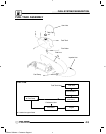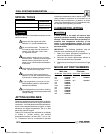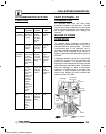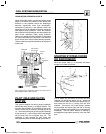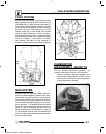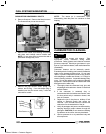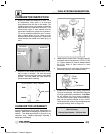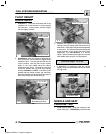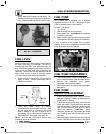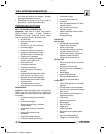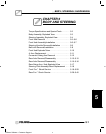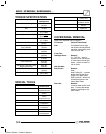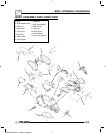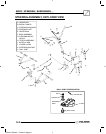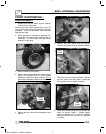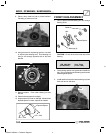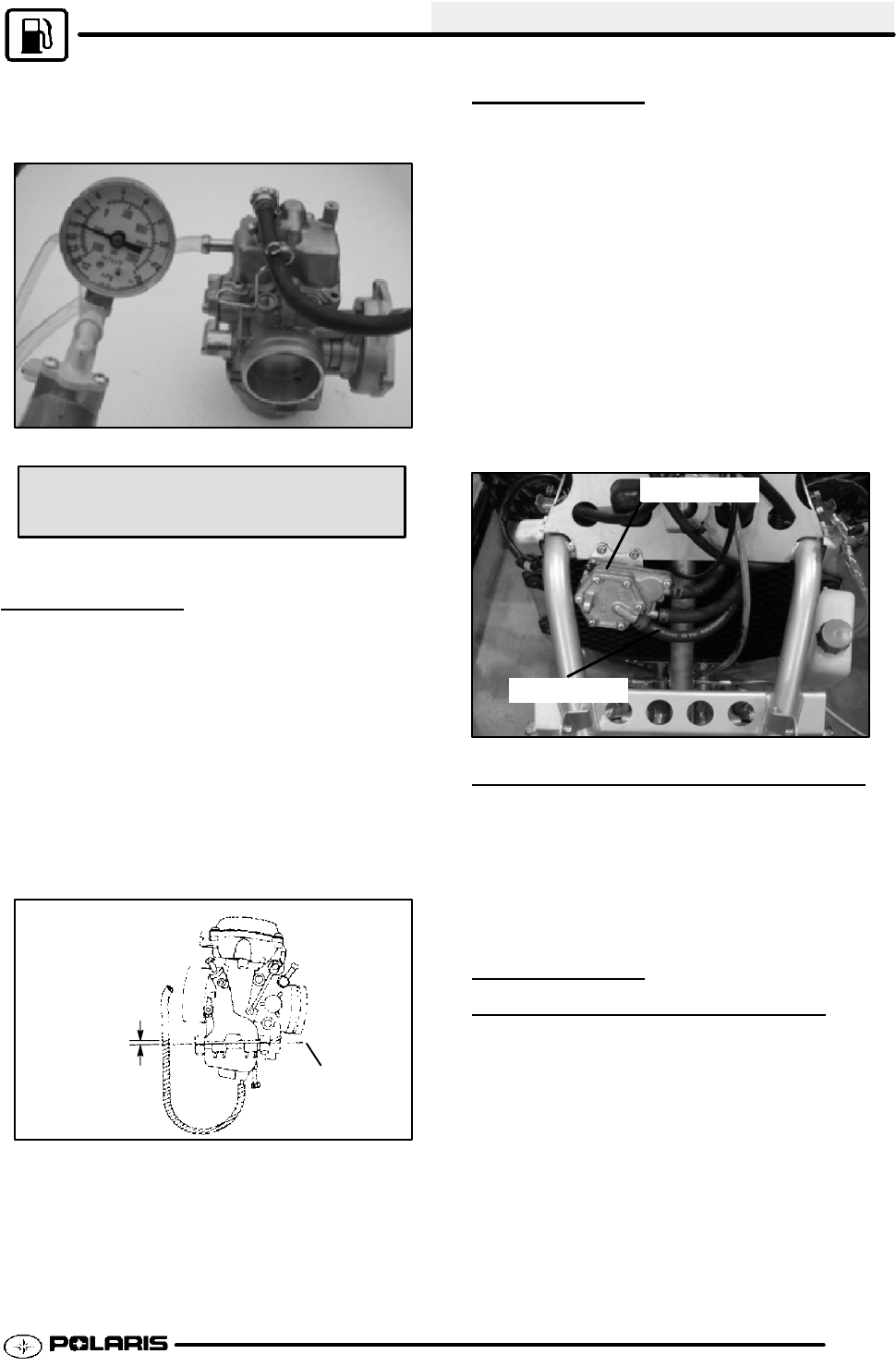
FUEL SYSTEM/CARBURETION
4.11
fitting. Apply 5 PSI pressure to inlet fitting. The
needle and seat should hold pressure indefinitely.
If not, inspect needle and seat and seat O-ring.
Mity Vact (PN 2870975)
FUEL LEVEL
A fuel level test can be performed on some models if
the drain hose fitting is accessible. Be sure to
re-attach the bowl drain hose after performing the
test. A fuel level test allows you to observe the height
of the fuel in the float bowl without removing the
carburetor. The fuel level can be observed with the
engine either running or shut off, however, engine
must run briefly to allow fuel level to stabilize..
1. Attach a clear line to drain fitting. Be sure line fits
tightly on fitting. Position hose along side of
carburetor as shown.
1.5 mm
.060s
Bowl Mat-
ing
Surface
2. Open bowl drain screw by turning
counterclockwise approximately two turns. Start
and run engine for 3 to 5 seconds to allow fuel
level to stabilize in the line. If level is out of
specification, remove carburetor and inspect inlet
needle and seat, float height, passages, etc.
NOTE: If a line was removed to perform this
procedure, it must be replaced.
FUEL PUMP
The Predator 500 is equipped with a pressure
regulated fuel pump (1-3 PSI). The pump is located
in the front fender cavity of the machine.
To test the fuel pump:
1. Turn fuel off.
2. Disconnect impulse line from pump.
3. Connect Mity-Vact (PN 2870975) to the impulse
line fitting on the pump.
4. Apply 5 inches (Hg) vacuum to the pump fitting.
The diaphragm should hold vacuum indefinitely.
If fuel is present in the impulse line or vacuum
chamber of the pump, the diaphragm is ruptured. The
pump diaphragms must be replaced.
Fuel Pump
Impulse line
FUEL PUMP DISASSEMBLY
1. Remove the screws from the pump diaphragm
cover. Note the location of the two longer screws.
2. Remove the diaphragm cover gasket,
diaphragm, and valve body gasket.
3. Remove the outlet check valve cover, diaphragm,
and gasket.
FUEL PUMP
INSPECTION/ASSEMBL
Y
1. Inspect inlet and outlet check valves for cracks,
warpage or damage. Inspect the diaphragms for
cracks, holes or swelling.
2. To clean the valves or pump body, remove the set
screw and washer. Remove the valve and wash
with soap and water. Carburetor cleaner may be
used to clean the pump body when the check
valves are removed. CAUTION: Some
carburetor cleaners are very caustic and should
not be used to clean the non-metal parts of the
fuel pump.
3. Check the sealing surfaces of the pump body and
covers. Carefully remove all traces of old gasket
Enfocus Software - Customer Support



